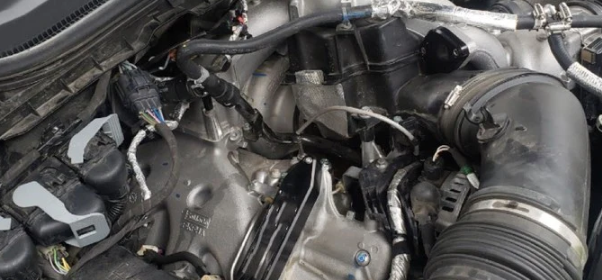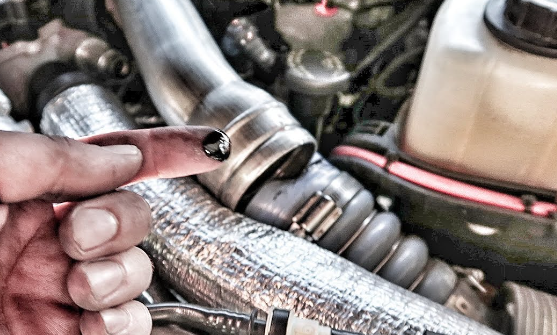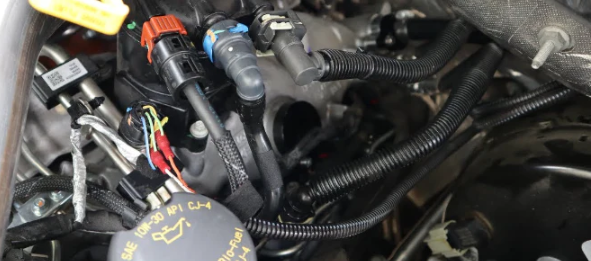In the 6.7 Powerstroke community, many owners and users often ponder whether CCV deletion is a wise decision or simply an unwise expenditure of money. This article addresses all common questions and clarifies misunderstandings about the 6.7 Powerstroke Crankcase Vent Delete. The benefits and drawbacks of such an action should be considered when considering this option.
🎯Suggested article:
Can You Perform 6.7 Powerstroke CCV Delete?

The Ford 6.7 Powerstroke is a powerful and capable engine that requires regular maintenance to keep it in the best possible condition. One of the most important tasks related to this engine is CCV (Crankcase Ventilation) delete or re-route.
Anyone can do this task with basic technical knowledge and expertise. However, it is advisable to seek professional help for better results.
New owners of a Ford 6.7 Powerstroke engine need to understand what CCV does and why its function needs to be appropriately maintained. The Positive Crankcase Ventilation system’s primary purpose is relieving pressure from the crankcase due to blown by gases, then routing them back into the intake manifold so they can be consumed by the engine again.
To ensure optimal performance of this system, an efficient filter must be installed to capture any debris that may damage other components within the vehicle over time if not removed regularly.
When excessive crankcase pressures or build-up corrosion occur, as well as lack of routine maintenance on the filter, oil leaks, smoke, or poor engine performance may result, which calls for immediate attention to inspect your CCV system – either through replacement or deletion depending on your specific needs at that moment in time -and take necessary action accordingly.
Visiting your nearest Ford dealer or servicing center should always remain an option when under warranty to get expert help and advice during such times of need!
How Do I Know My 6.7 Powerstroke CCV Is Bad?
When maintaining a Ford 6.7 Power Stroke diesel truck, the crankcase ventilation filter (CCV) should not be overlooked. The CCV system is designed to keep your engine running smoothly and efficiently by releasing excess pressure.
However, this system can become clogged or dirty over time and may need servicing or replacing. When this happens, identifying the problem is crucial in determining what needs servicing or replacement.
One of the first signs that something is wrong with the CCV filter is when oil starts leaking from it. If you notice smoke coming from your engine, an unusual smell of diesel, and a wheezing sound, these are all indicators of an issue with your CCV system. In addition, high idle speeds and poor fuel economy are also common symptoms associated with a bad crankcase vent filter.
To diagnose whether the problem lies within the CCV system, contact a professional at a Ford service center or another authorized dealer for assistance in determining how best to proceed: whether that means servicing, deleting, or re-routing your CCV filter altogether. Ensuring proper vehicle maintenance is essential, especially when dealing with specialized systems like those found on Ford’s 6.7 Power Stroke diesel truck engines; taking care of them now will help prevent more costly repairs down the line!
How To Perform 6.7 Powerstroke CCV Delete?

It is suggested that if the video reference provided does not yield sufficient understanding, one may follow the step-by-step instructions below.
| Required Tools |
| 5/16 socket screwdriver, Pneumatic die grinder, or something with Cutoff Disc SHARP chisel (more precisely ½-inches and 7/8-inches). Also, 3 feet of the ¾-inches Fuel line. |
- First, remove the valve cover to gain better access to the crankcase vent.
- Utilize a 6/16 socket to take off the surface of the crankcase filter.
- Subsequently, extract the filter from its cover and place it upside down on a flat work surface.
- Employ a device with a cutoff wheel to cut in the middle and then lop off both corner posts of said filter media.
- Leverage a screwdriver to pry apart simultaneously and pull up plastic pieces away from each other when done cutting them off.
- Place this filter inside a 5-gallon bucket for proper cleaning procedures-completion.. 7 Use a 1/2-inches chisel to remove glue residue left behind after filter cleaning is completed.
- Reinstall housing back onto the valve cover by flipping it over & bolting it properly, as well as putting the intake tube back into the air filter box & turbo elbows connected priorly
- Finish the final steps by routing your CCV tube line according to your desire, either from the modified housing or the valve cap.
What Are The Benefits Of Deleting 6.7 Powerstroke CCV?
When an old or existing CCV is deleted or re-routed, the Powerstroke engine bay is given a much-needed cleanup. Additionally, this process enhances the pressure-relieving capacity of the crankcase ventilation system. The result? No more oil leaks, excessive idling, high fuel consumption, and poor fuel economy and performance drops contribute to an improved driving experience.
⚡️Another article:
What Are The Drawbacks Or Problems Of Deleting 6.7 Powerstroke CCV?
Although some users prefer to reroute their CCV rather than delete it, there is no significant drawback or problem after deletion. The reason is that delivery will ensure the crankcase vapors are returned to the intake, avoiding the risk of coating the intercooler with oil. However, an issue to be aware of is that if the CCV delete hose is installed, it may cause further oil leaks. As such, Ford recommends changing the CCV regularly as part of regular engine servicing.
Can You Drive With A Bad CCV On Your Ford 6.7 Powerstroke?
Although not recommended by Ford or technical experts, a vehicle may be driven with damaged or faulty significant parts, such as CCV, in cases where no other option is available. However, caution must be exercised, and the throttle should be used gently. Additionally, excessive oil consumption can be expected under these circumstances.
How Often Should I Change Or Delete My 6.7 Powerstroke CCV Filter?
Ford recommends that owners of 6.7 Power Strokes change their CCV filter after 65,000 miles of operation and inspect the crankcase ventilation system for potential issues during each routine or scheduled servicing of the vehicle and engine. Following this recommendation can help ensure optimal performance from your vehicle’s engine over its lifespan.
Final Thoughts
This detailed guide provides an inexpensive and straightforward solution to the common issues that Ford 6.7 Powerstroke owners face, such as oil leaks, smoke, excessive oil consumption, a significant drop in fuel economy, and engine performance problems. The guide details how to perform a 6.7 Powerstroke Crankcase Vent Delete to alleviate these issues and should prove invaluable for anyone struggling with them.
